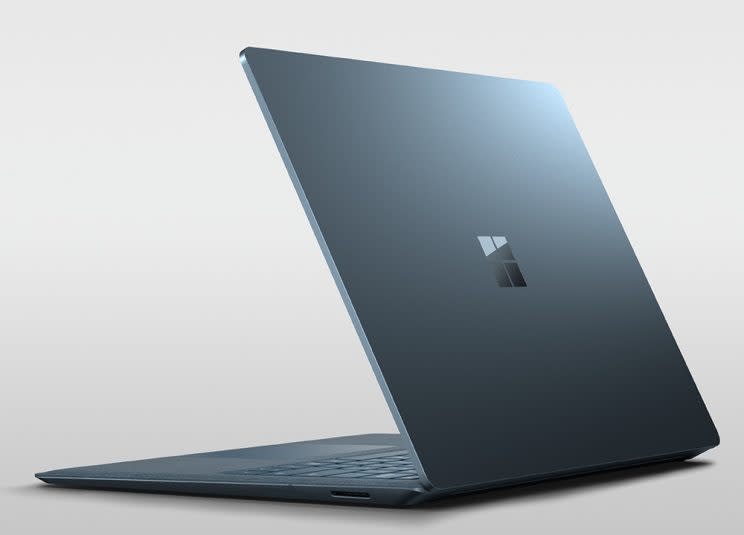Microsoft exec defends introducing laptop despite declining PC market
The PC market has been in freefall for some time. With the proliferation of smartphones and tablets, consumers have found fewer reasons to upgrade their years-old computers for newer, more powerful models.
But that isn’t stopping Microsoft (MSFT) from jumping headlong into the fray with its very first laptop conveniently named the Surface Laptop, which went on sale worldwide on June 15. So what makes the Windows maker think it can thrive in a market that’s slowly falling apart?
Simple: There will always be a need for laptops.
That’s according to Microsoft Corporate Vice President Panos Panay, the man behind the company’s Surface line.
“This is a classic form factor,” Pana said. “The laptop is not going anywhere, and it’s a product that people use every day, in and out to get done what they need to create to produce.”
The Surface Laptop, which starts at $999 with an Intel Core i5 processor, 4GB of RAM and a 128GB solid-state drive, is certainly an elegantly designed device. The notebook’s industrial styling is offset by the Alcantara fabric covering its keyboard deck, which serves as a comfortable perch for your wrists as your type.
A laptop built for safety
But the Surface Laptop isn’t your standard computer. In addition to serving as a competitor for Apple’s (AAPL) MacBook and MacBook Air, the Surface Laptop is being marketed to students and teachers as a means to compete with Google’s (GOOG, GOOGL) Chromebooks.
To that end, the Surface Laptop comes loaded with a special version of Windows 10 called Windows 10 S. Unlike the standard version of Windows 10, 10 S locks you down to the apps already on the computer and those available through Microsoft’s Windows Store.
That means you can’t download things like Google’s Chrome browser, since Google doesn’t have a Chrome app in the Windows Store.

Panay says there’s a reason for that kind of restriction: safety.
“We brought Windows 10 S to market with this product because we wanted a streamlined experience, because people want security. They want more battery — our customers demand it,” Panay said. “We think this is a perfect opportunity to bring a product like this to market.”
Microsoft isn’t offering Windows 10 S as an option for the Surface Laptop, though. Instead, 10 S will be the sole operating system you can purchase with the computer.
If you want fewer restrictions, you’ll also be able to quickly update to the full version of Windows 10 for free until Dec. 31. After that you’ll have to pay $50 to upgrade the OS.
A confusing situation?
But selling a laptop without a full version of Windows 10 could confuse consumers. That, however, doesn’t concern Panay.
“When they use [the Surface Laptop], when people use, it I think Windows 10 S is going to delight a lot of people,” Panay said. “This is a product that when you get into it, it gives you everything you need.
“Now, the ideal situation is you get to stay in 10 S, we can make sure you’re as secure as you can possibly be, you get all of that battery life, and everything is verified through the Windows Store which is great,” he explained.

Still, Panay said, Microsoft understands if people decide to leave Windows 10 S.
“Where people will go, I think we’ll wait and see, but I think we’re going see a lot of adoption of Windows 10 S.”
Will Microsoft’s Surface Laptop bring about a sort of renaissance for the PC market? Will it be able to dethrone Apple’s MacBook and MacBook Air? And how will consumers respond to Windows 10 S? We’ll find out soon enough.
More from Dan:
Microsoft’s new Surface Pro is a powerful machine with a slight drawback
Microsoft’s new Xbox One X is a beast, but faces an uphill battle
Email Daniel at [email protected]; follow him on Twitter at @DanielHowley.
